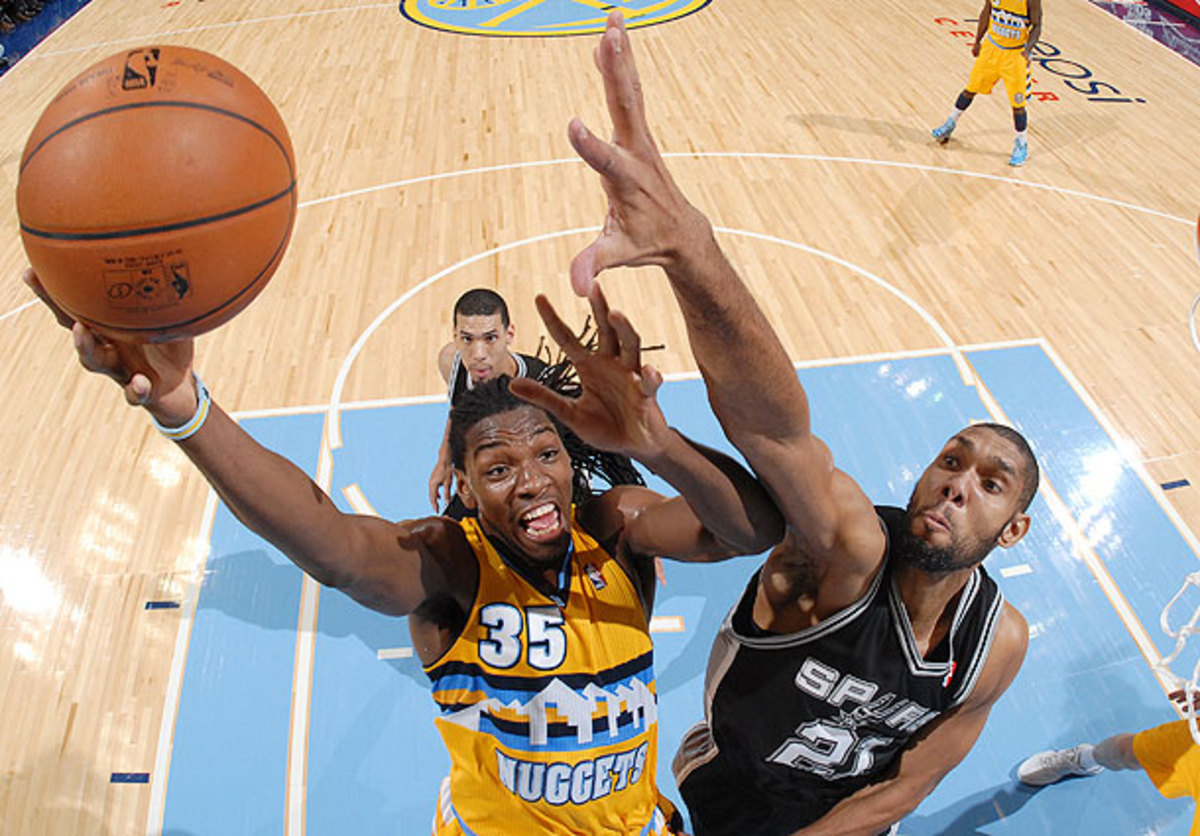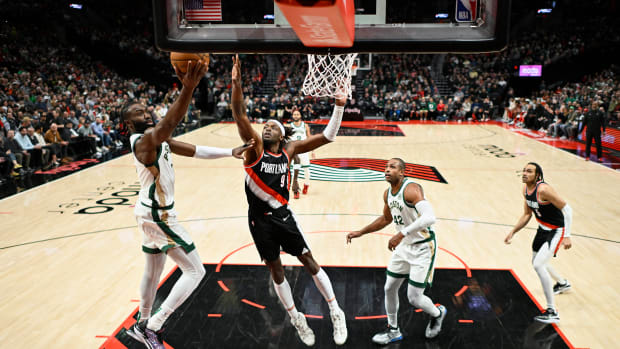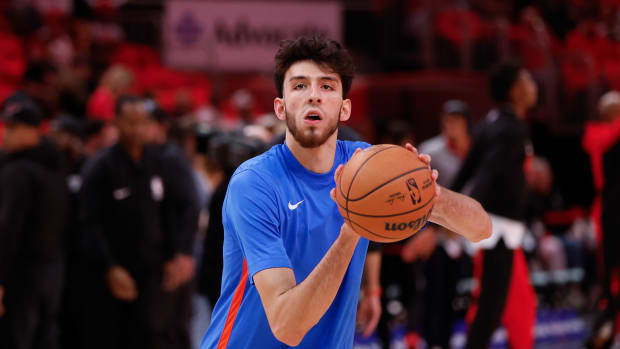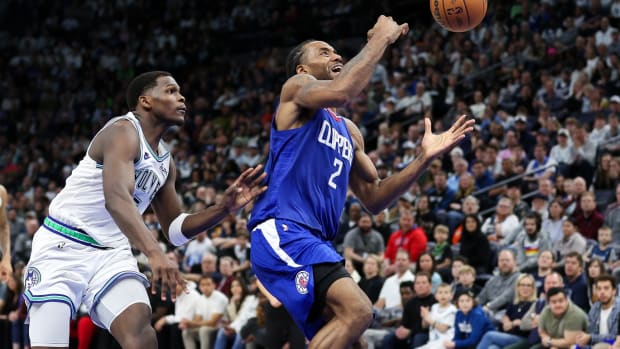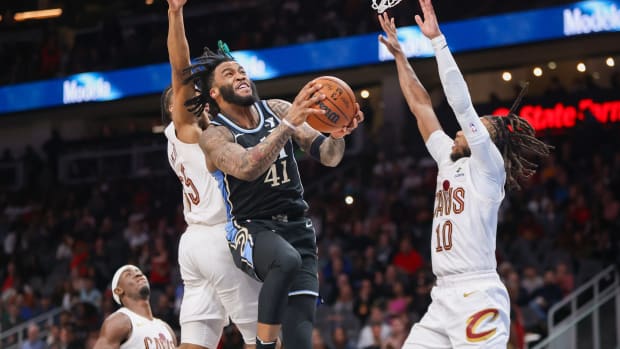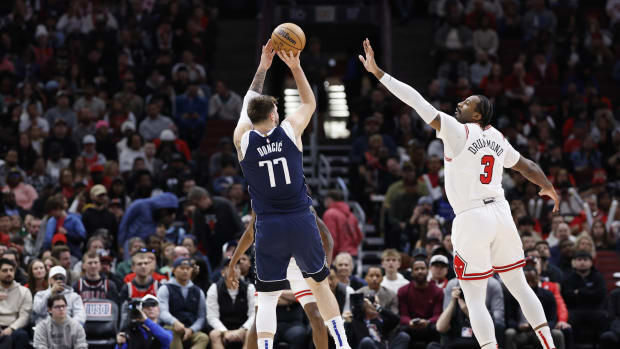Tim Duncan's resurgence fueling the Spurs' title-worthy defense
Tim Duncan has reasserted himself as one of the league's best interior defenders this season. (Garrett W. Ellwood/NBAE via Getty Images)
By Rob Mahoney
The Spurs became "Tony Parker's team" several seasons ago, boasting a refashioned offense that accentuated his talents while slowly drifting away from the post-centric work of Tim Duncan. Parker has grown to be a masterful and magnetic player while piloting one of the league's most sophisticated offenses. But the implication of the "Parker's team" rhetoric is a bit ridiculous in a sport that draws so heavily from interdependence. It may be Parker that drives the Spurs' offense, but this San Antonio team is no more his than it is Tim Duncan's, and it's no more reliant on efficient offense than it is on stifling defense.
That's quite a development given the Spurs' defensive concessions in recent years, as various moves designed to flank Parker, Duncan and Manu Ginobili with the appropriate offensive help wound up weakening what had historically been an elite defensive team. The regression was never so stark as to be catastrophic to San Antonio's regular-season efforts, but the Spurs' problems in coverage were often problematic enough to doom them in the playoffs.
This season looks to be a bit different, in part due to Duncan's renaissance. Many have been quick to point out Duncan's amazing resurgence this season as it relates to his box score contributions -- Patrick Ewing is the only player over 35 in NBA history to approximate Duncan's production -- but let's not overlook the import of having a sprier, more mobile Duncan at the center of the Spurs' defense.
Duncan doesn't fly around the court these days, but he's been a huge benefit to San Antonio this season purely by understanding when to gravitate from one threat to the next. His dwindling speed sometimes forces him to close out too aggressively on pick-and-pop shooters and thus makes him vulnerable to basic shot fakes, but it's for that reason that Gregg Popovich generally assigns the nimbler Tiago Splitter to defend the opponent's pick-and-roll threats. In that switch of assignment, Duncan is free to focus on the intricacies of his rotational defense -- those micro-managed mini steps that allow him to inch his way into position and help against a drive or a cut.
Even with slowed feet and a nonexistent vertical, Duncan has reasserted himself as one of the best interior defenders in the game. According to NBA.com, San Antonio has defended the basket well overall (Spurs opponents shoot just 56.7 percent in the restricted area this season) but smothers opponents at the rim, holding them to just 53.8 percent shooting whenever Duncan takes the court. That mark ranks second in the NBA this season behind only the asphyxiating D of the Pacers, largely because Duncan is so good at sliding over just enough to contest a shot near the basket:
Though Duncan's lift and foot speed have left him, his timing and knack for deflecting shots have not. Even when Duncan overcompensates on his close-out or arrives slightly late in rotation, his long arms and instincts give him a fighting chance at halting a shot attempt in progress:
It also should be noted that Duncan is as shrewd and discerning as interior defenders come, able to help manage the full course of a defensive possession without lunging or over-committing at any particular point. That -- along with the way he shades every play action, defensive three-second rule be damned -- makes Duncan amazingly foul-averse for an interior defender, and also helps San Antonio to create small, controllable pockets within their defense.
With Duncan always hovering rather than pressing, the Spurs guide opponents into crowded spots and difficult shots, all without applying the kind of pressure that makes some of the best defensive teams conducive to foul trouble. That's difficult to do without a player of Duncan's intuition. With Duncan on the floor this season, opponents have averaged just 18 free throw attempts per 48 minutes (per NBA.com), the best mark in the league relative to other teams' season averages and an essential component of the Spurs' clean defensive efficiency.
It's amazing how much Duncan does with so little remaining athleticism, particularly in his complete dominance of one-on-one defensive situations. In that sense, his age provides the bait for an alluring trap: Opponents obviously respect Duncan, but tend to take his athletic decline as an invitation to attack the basket or challenge him to close the gap on a jumper. Neither action ever turns out all that well for the offensive player. He may not be able to leap to swat a potential shot attempt, but Duncan's reaction time is amazingly quick, thus providing the opportunity for him to stretch toward the shot without leaving his feet. He also does a great job of controlling players off the dribble with subtle, off-hand contact, directing them toward the help of his teammates and unfavorable angles. His base is strong, his footwork ever impeccable and his preemption first-class. All in all, those qualities allow Duncan to limit opponents to shoot just 38 percent shooting in one-on-one situations (isolations and post-ups) according to Synergy Sports Technology, and somehow turn the expected exploitation of an aging defender into a chance to dupe gullible offensive players.






























